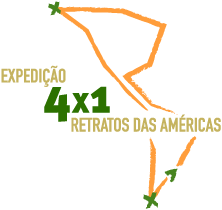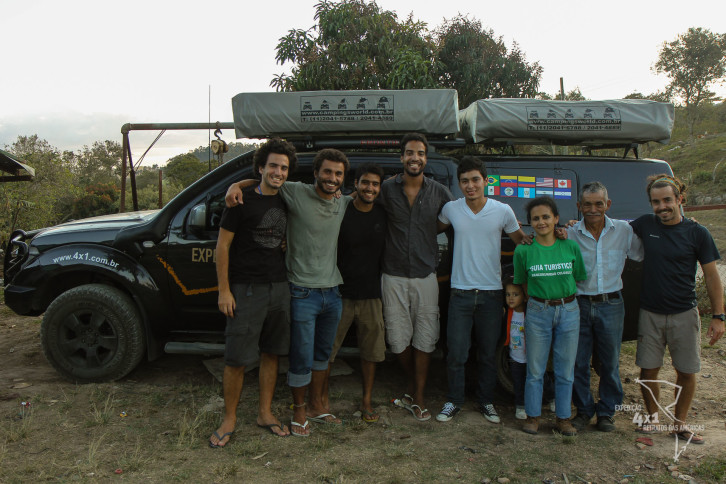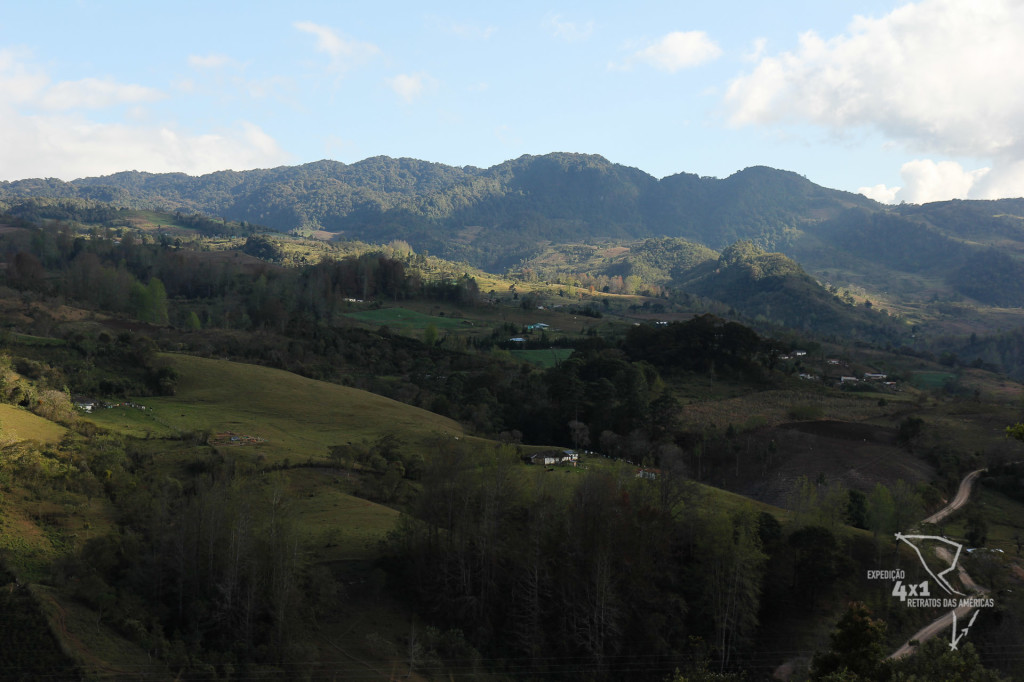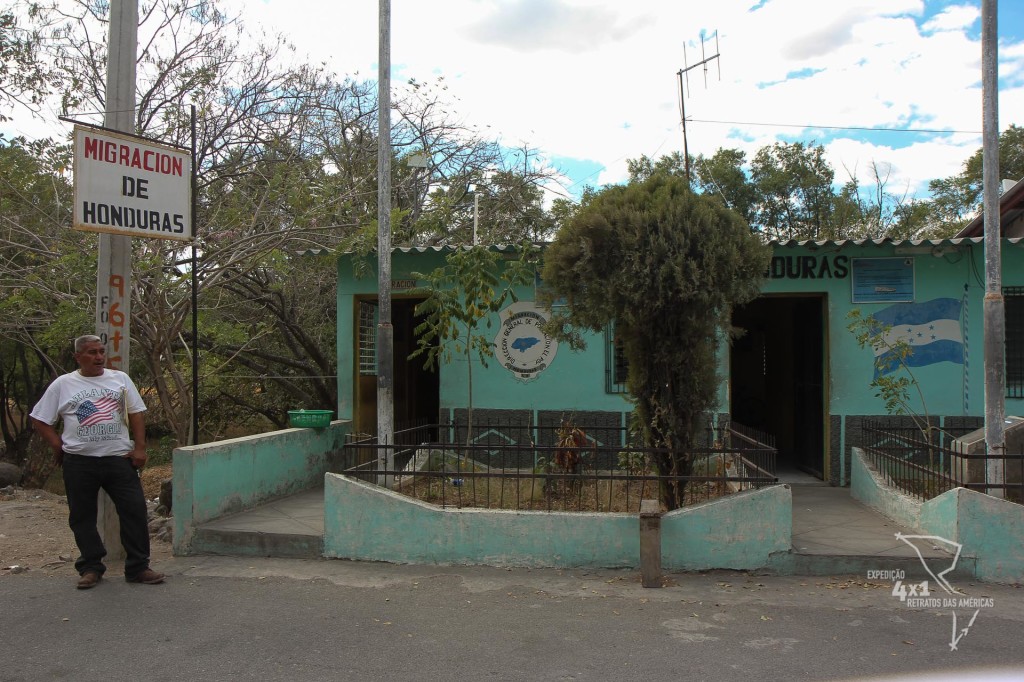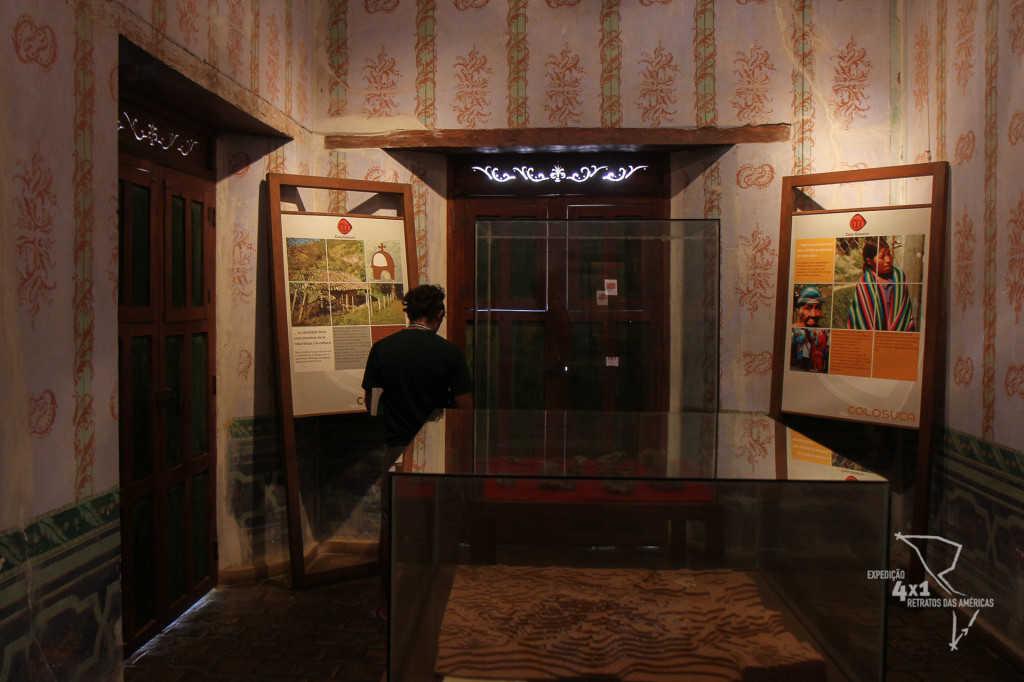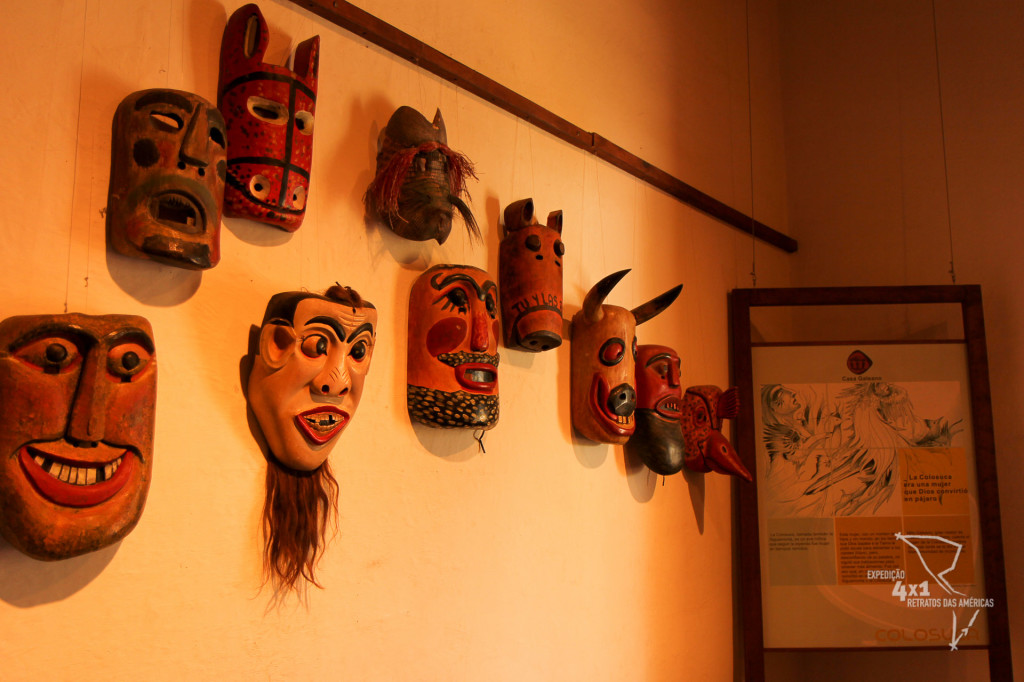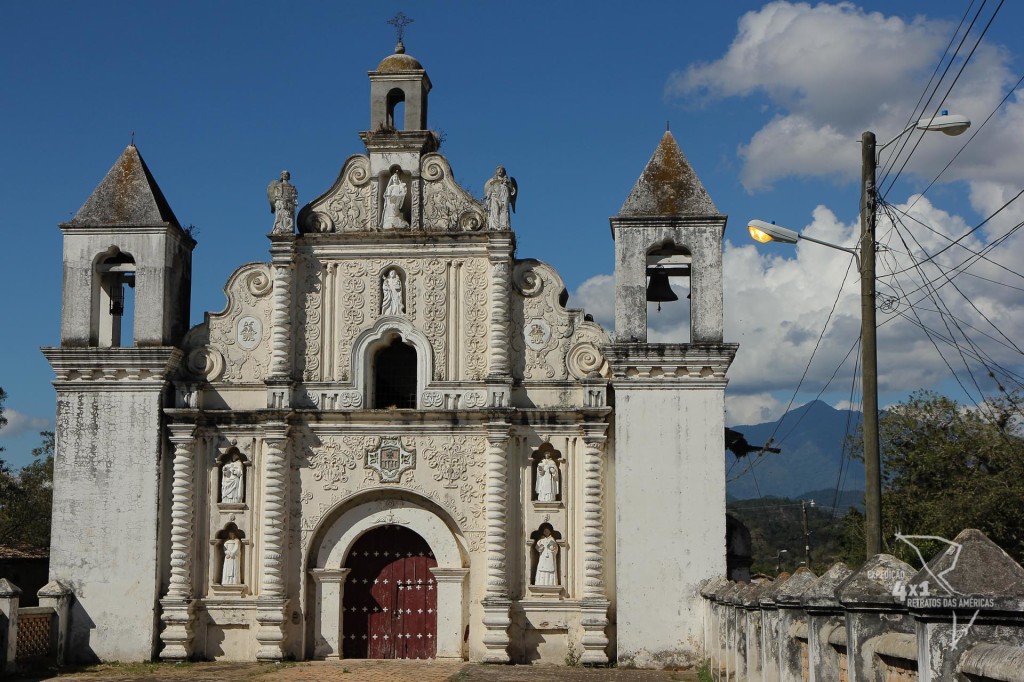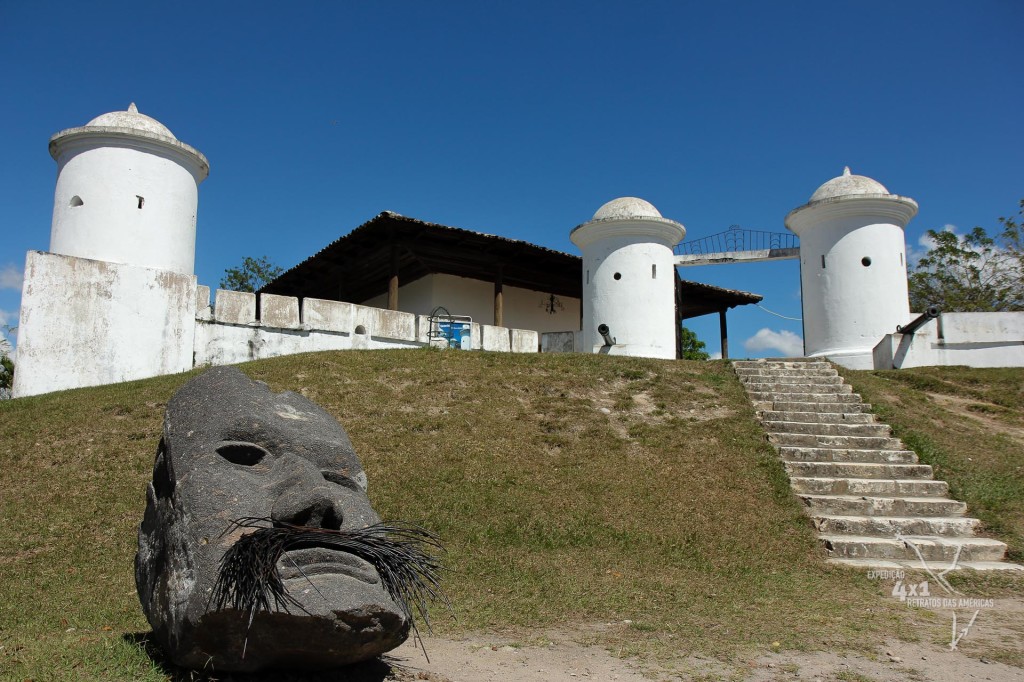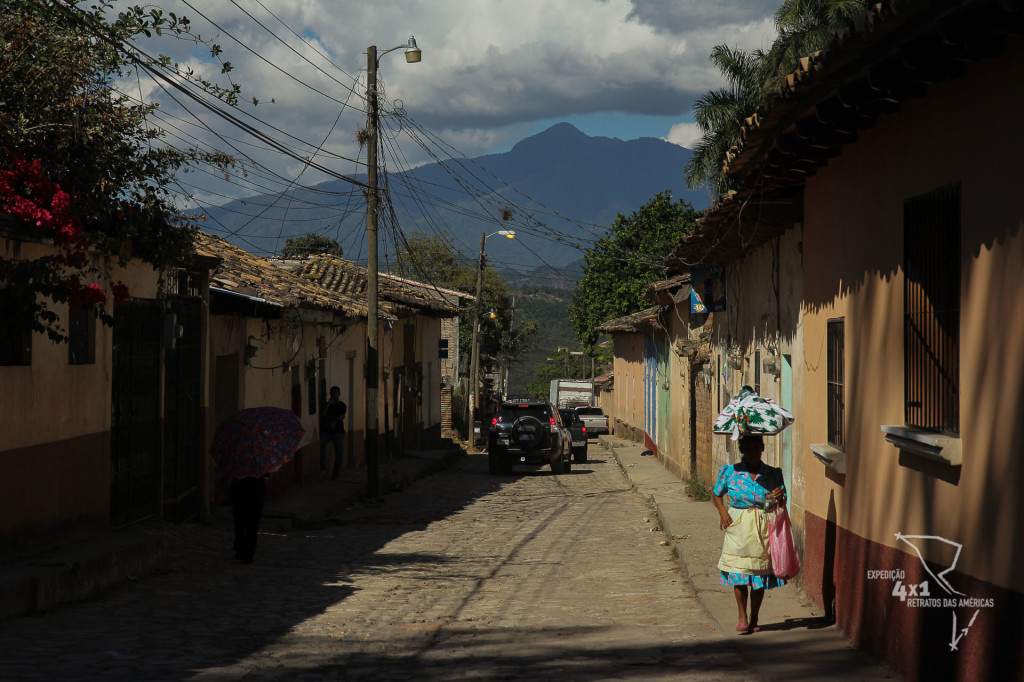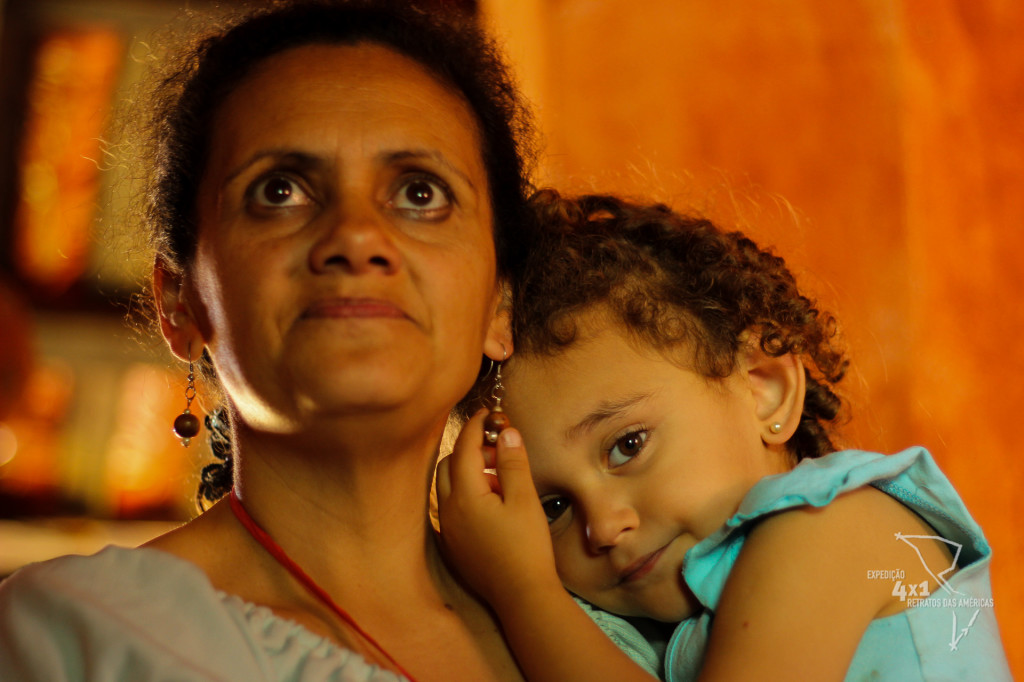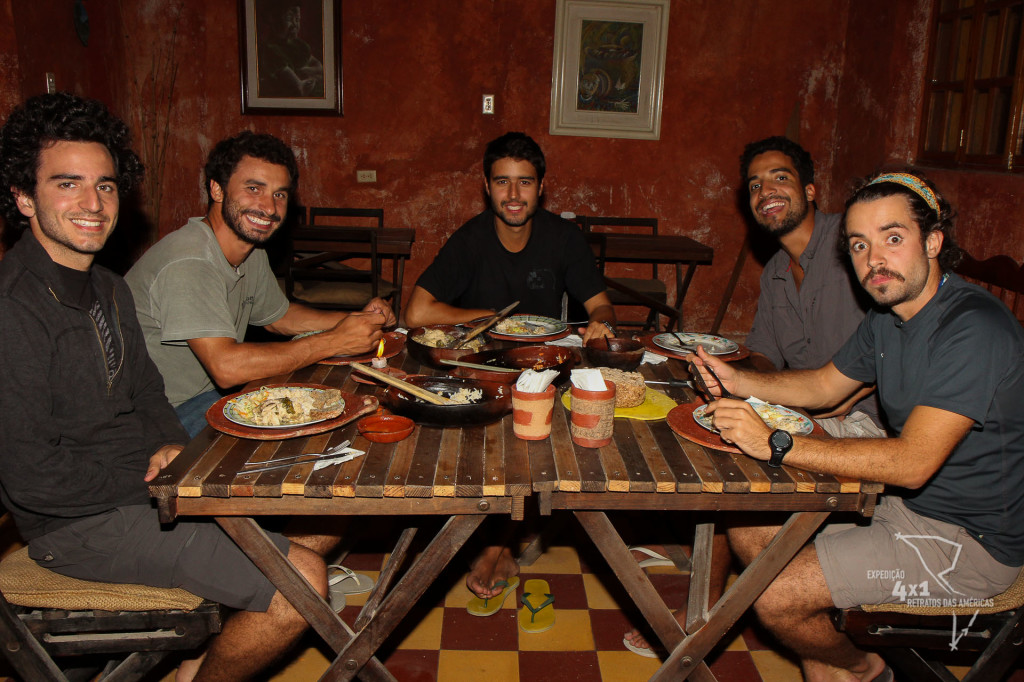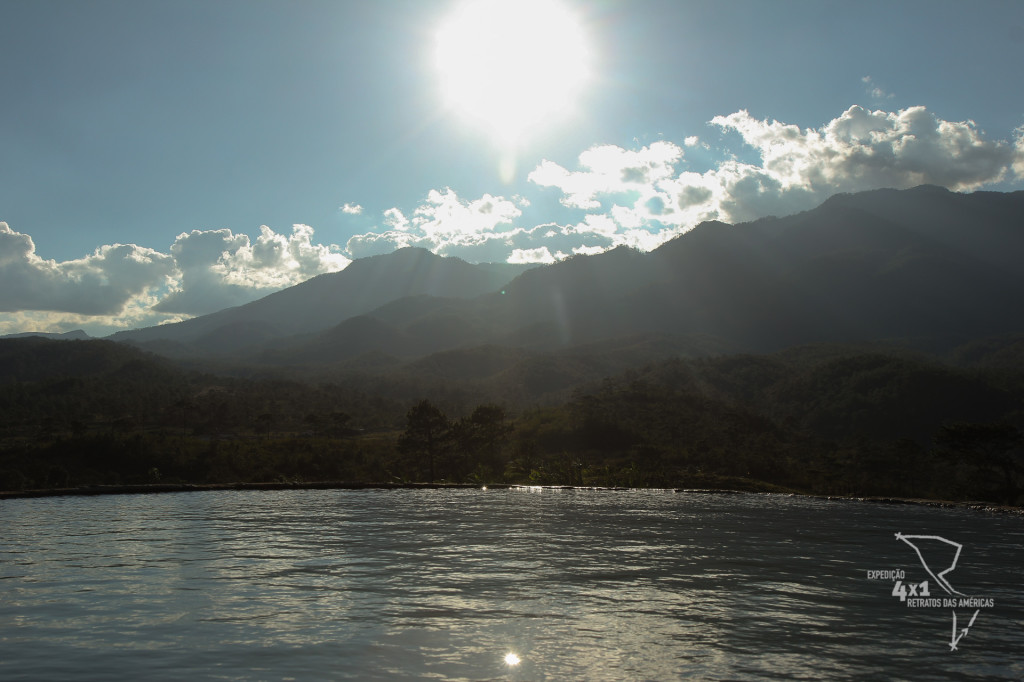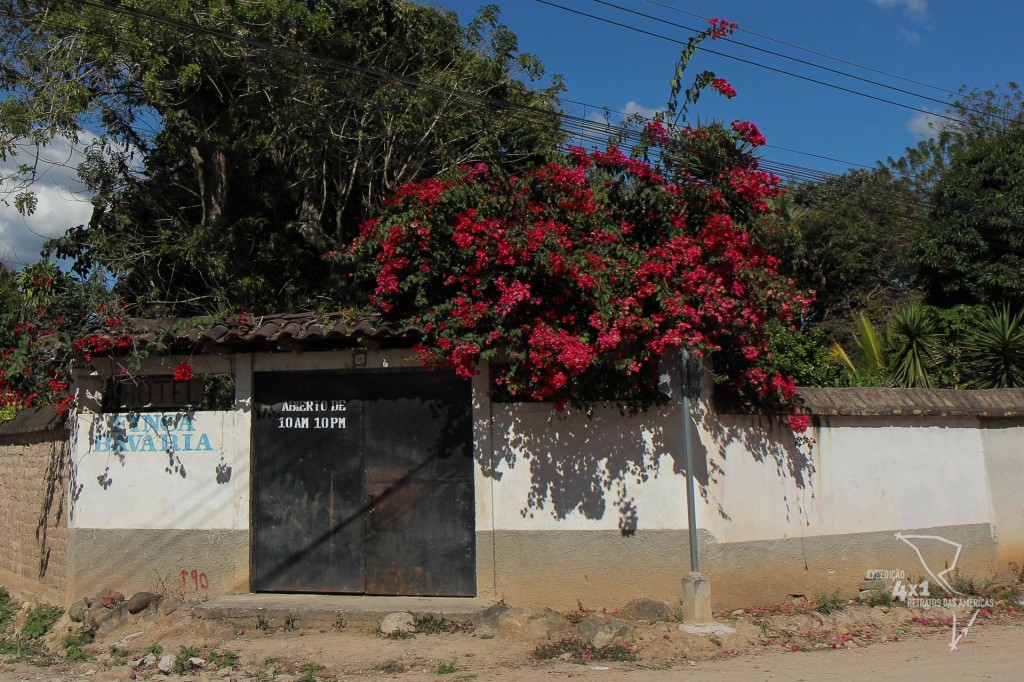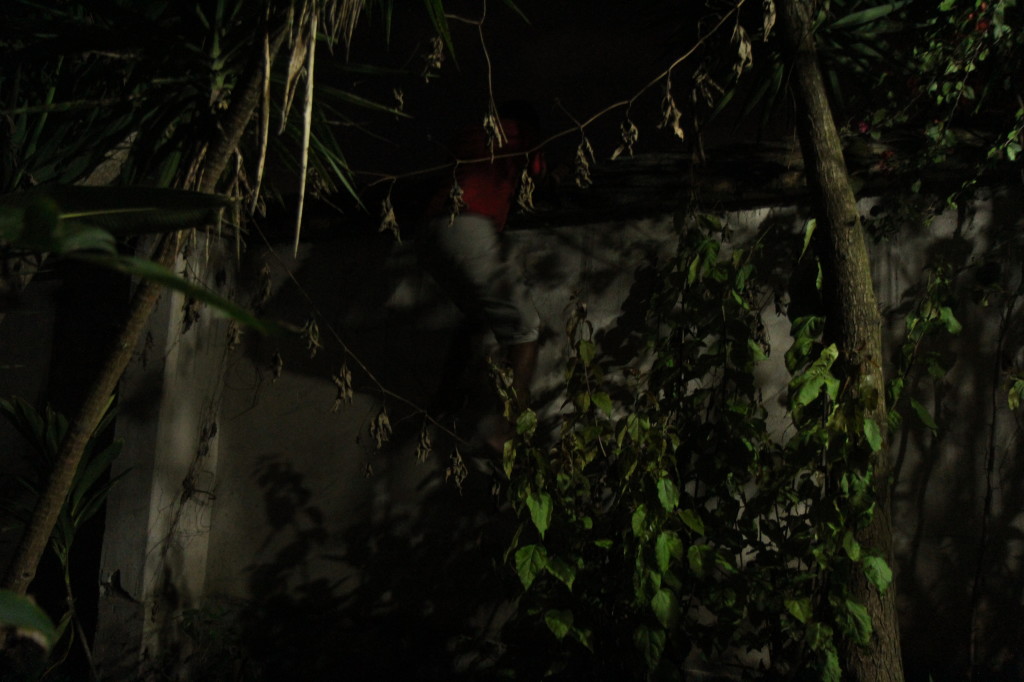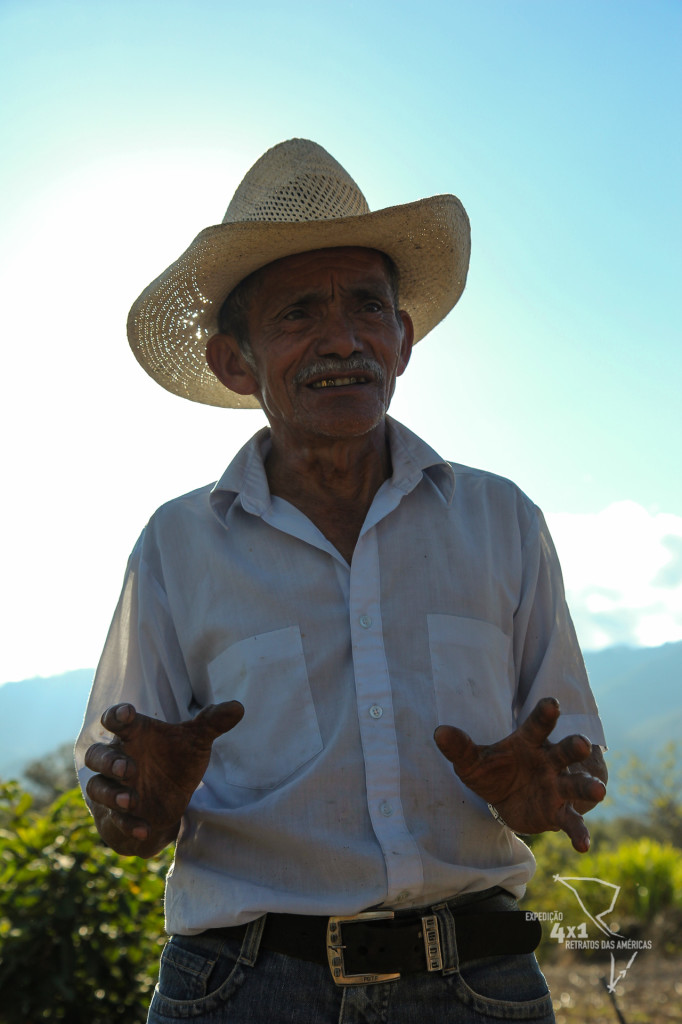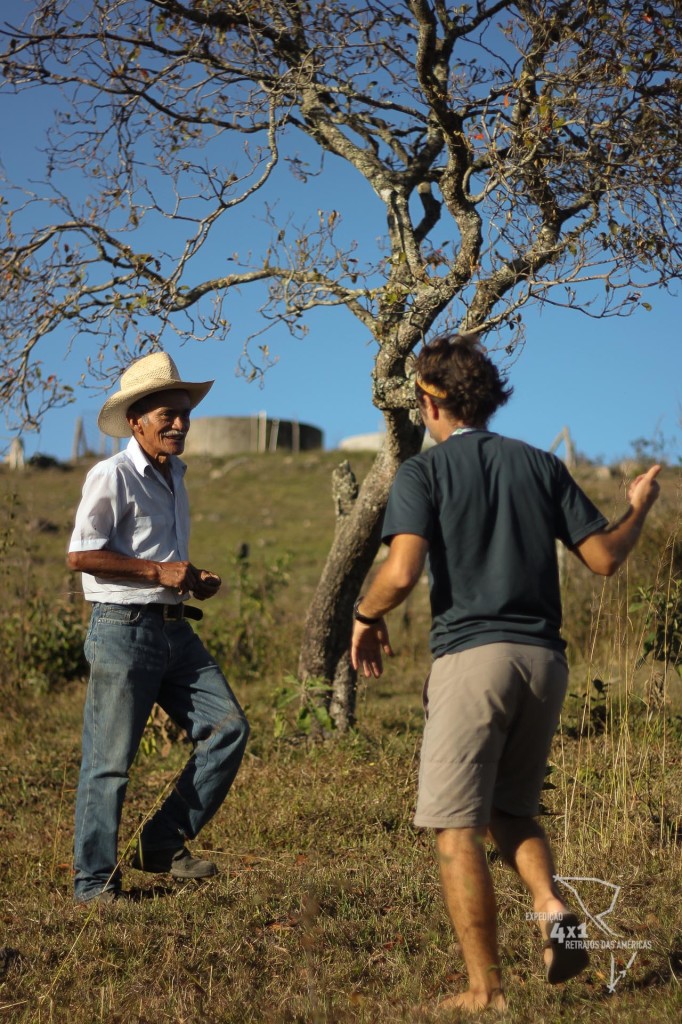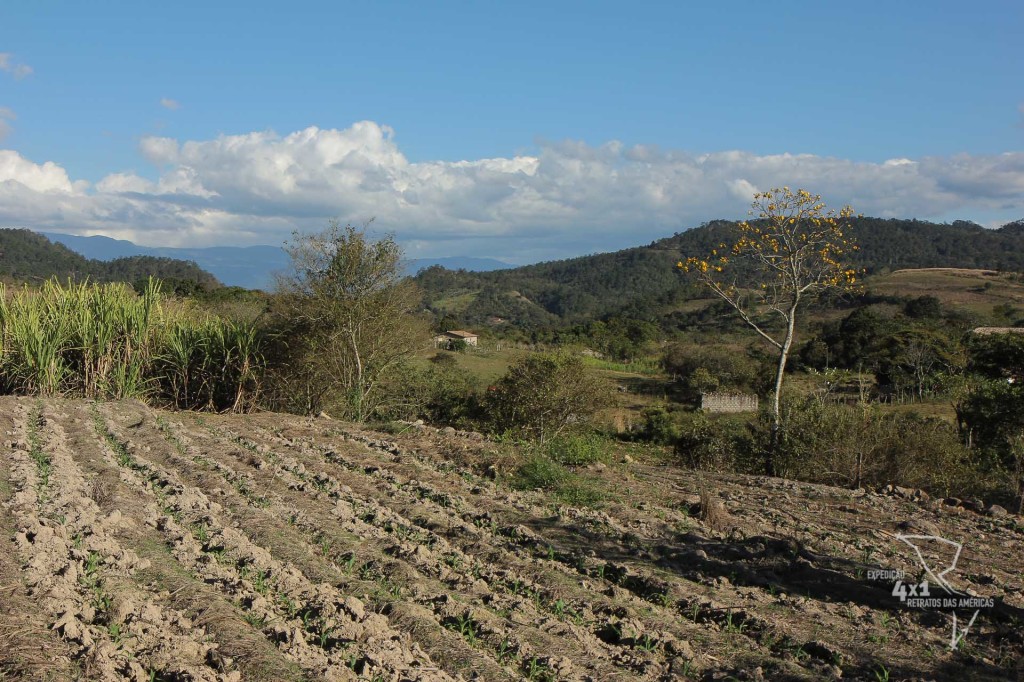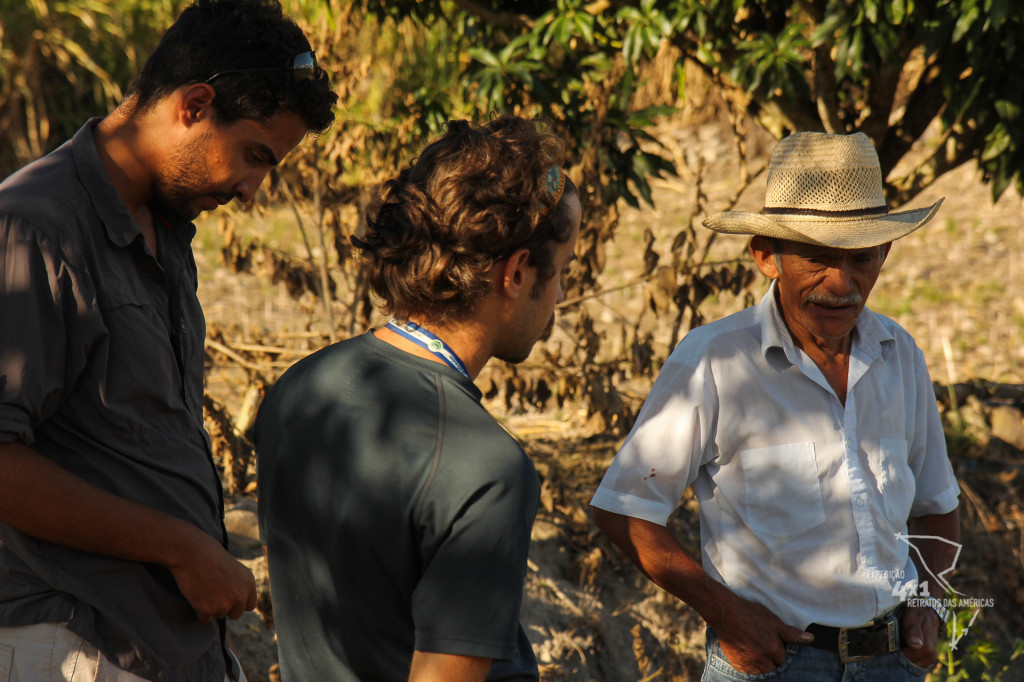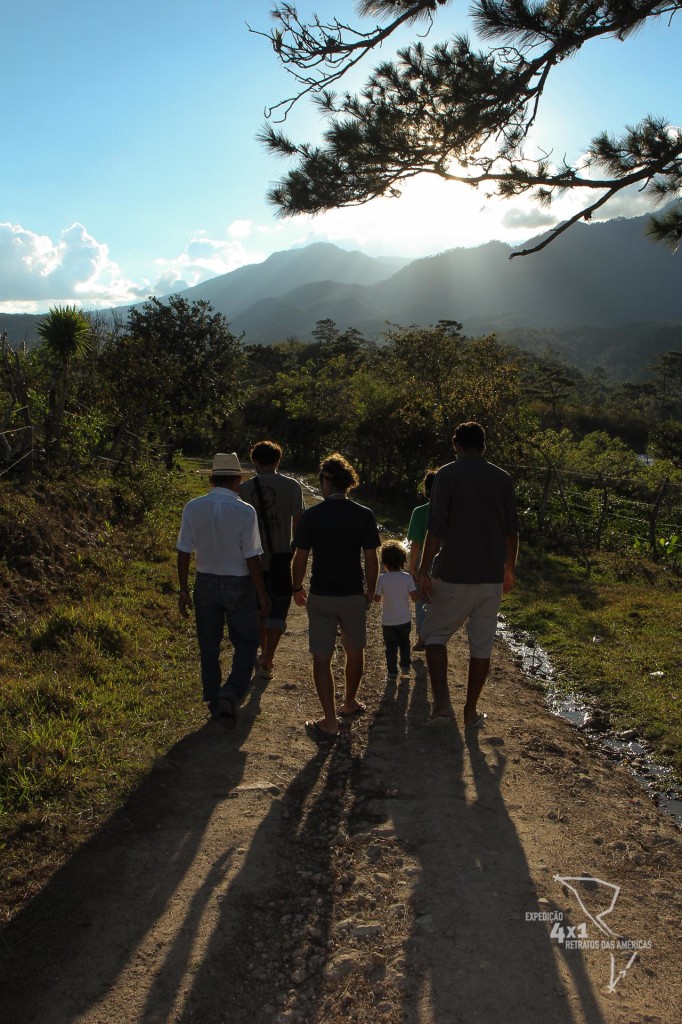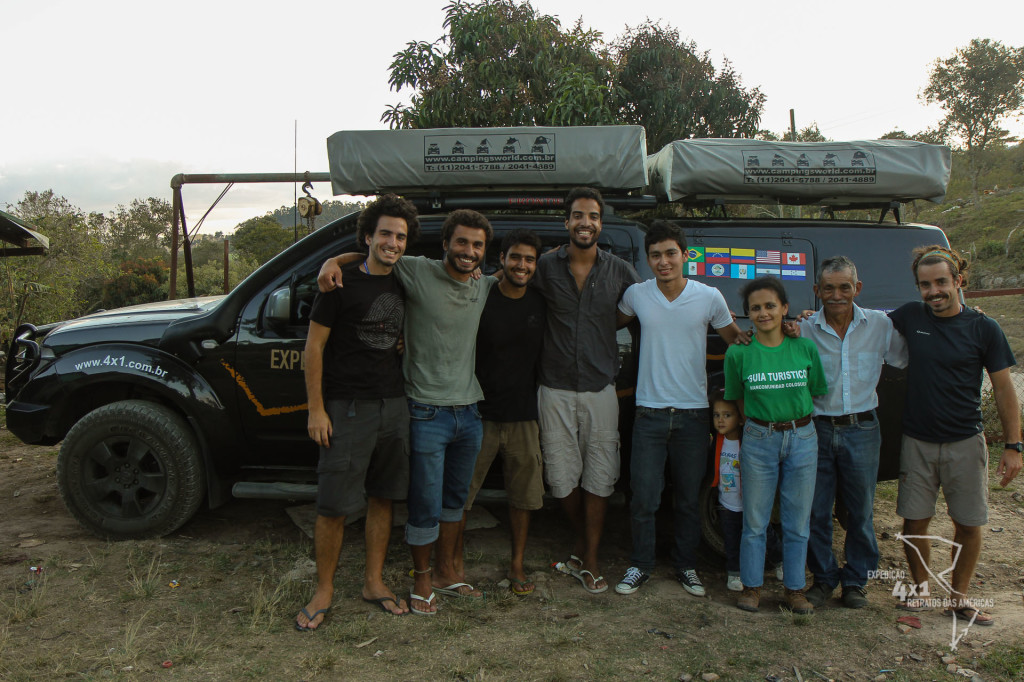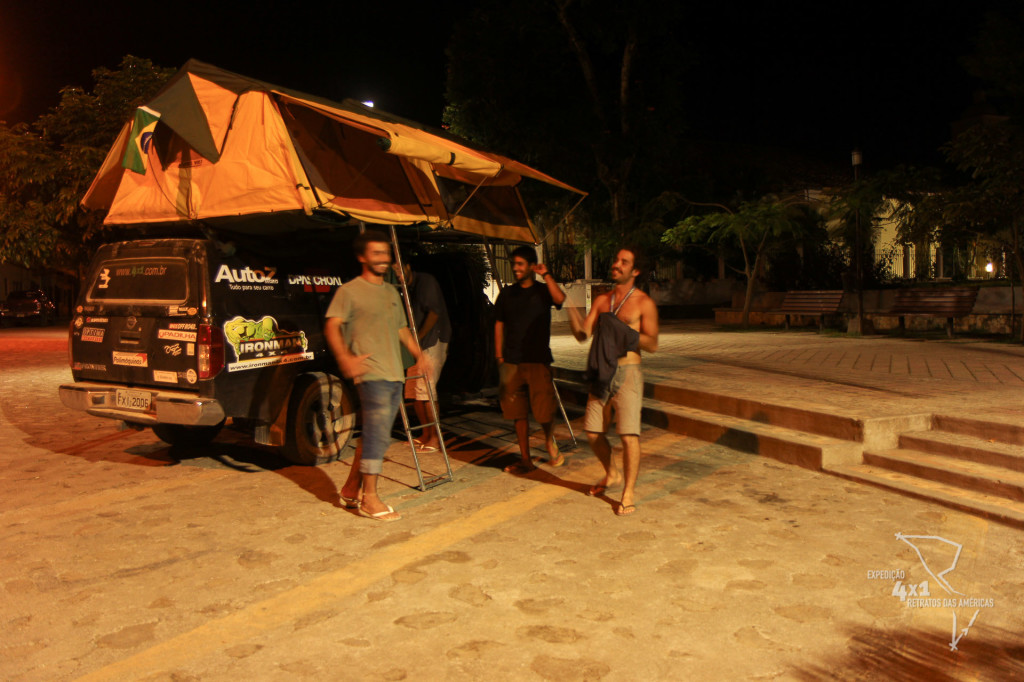Ficha 4 × 1
Date: 28/01/2013 to 30/01/2013
Saímos of: San Salvador, El Salvador
Total distance: About 240 km
Where to sleep: In Tents - A Night at Finca Bavaria and another in the square called Central Park (both em Thanks).
Filled Tire : The city of Gracias : Know more thoroughly the history of some inhabitants of Gracias and traditions still alive to witness the Lenca culture.
Final destiny: Thanks – Honduras
Travel time: 6:30 am More (including border)
What we eat good: Lenca cuisine - a chicken prepared local fashion and traditional hot chocolate drink Lenca (that, did not like much).
Tire murcho: The roads in the stretch we did, though beautiful landscapes of valleys and rivers, tem huge holes every hundred yards.
Path: We left San Salvador taking the CA 4N/Carretera Main del Norte. We entered Honduras through Nueva Ocotepeque and we took the plates towards Santa Rosa de Copan until we left for CA 11A toward Gracias.
Tourism in Honduras is among traditionally oriented 3 pillars: the first and best known is related to their Caribbean islands (as Utila and Roatan) which holds one of the largest reef systems in the world; the second is focused on its dense tropical forests rich in rivers and birds of various species. The third, and last, is related to the history and cultural background of the country, who witnessed the height of the Mayan empire - through the Ruins of Copan (northwest of the country) - And keeps alive a strong heritage of indigenous Lenca culture that still lives around important colonial cities of the country.
Limited time, budget and even scarcer, needed to make tough decisions (and imagine that it is never easy to make decisions as complex as these to please 5 people!) We talked a lot, consider earlier experiences during Expedition and opportunities that we would still have to go in next countries…and, after hours, decided that we could not fail to know more deeply the historical and cultural side of Honduras. No entanto, as we entered the country from the west, vindo of El Salvador (passing the city of Nueva Ocotepeque), go to the magnificent ruins of Copan in force a huge comeback northbound through gorgeous, But poor, Honduran roads. (way more practical and traditional to go to Copan is from Guatemala). The decision was then taken: would go straight to 'Route'Lenca people and our base was the city of Gracias.
Through the Honduran Institute of Tourism, no ano de 2002, 6 municipalities joined together to create a political entity in order to foster sustainable and equitable development of its population. These cities were built in the former territory of the indigenous Lenca and termed as, led by Cacique Lempira (señor se la sierra - which today gives its name to one of the states and the Honduran currency) were, between 1524 and 1550, center of resistance to Spanish domination in Central America. The Spanish domination have transformed much of the cultural traditions of the Lenca people, but the current work of these communities still seek to keep alive many of their inheritances, proudly, are found in restaurants, Crafts, Ateliers and sites around the city. (A small but very interesting museum called Casa Galeano, located in Gracias, reports about traces of primitive animals millions of years found there, the importance of local relief for the Spanish decision to occupy the region and provides an overview about the culture of the peoples who inhabited the region. Since the culture, legends and traditions of Lencas, until the invasion of the Spaniards and their achievements.)
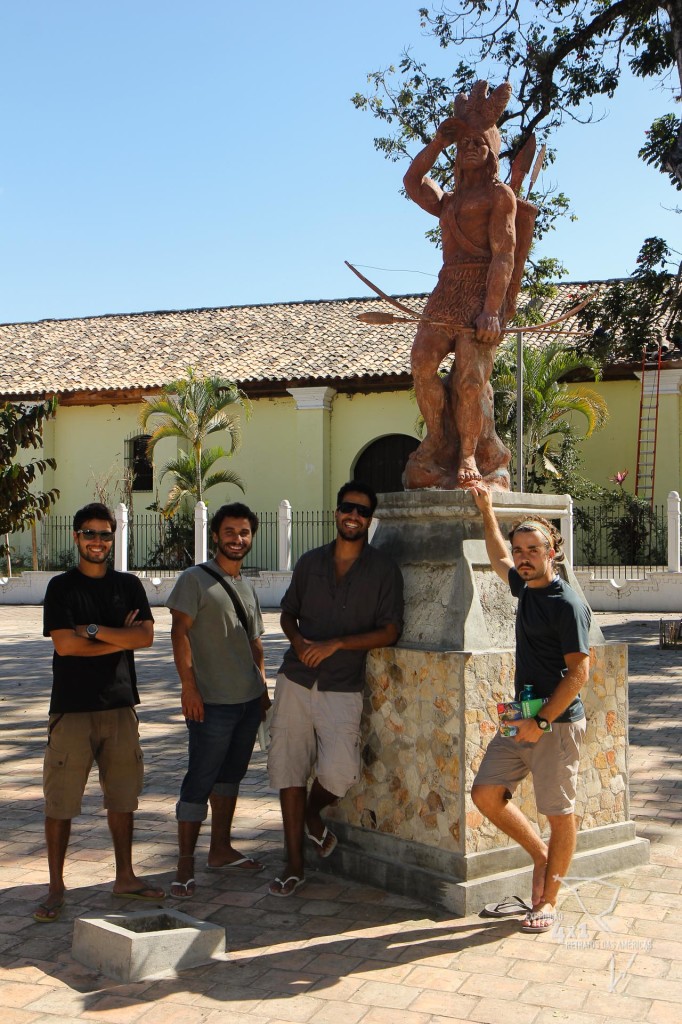
A statue in honor of the cacique Lempira, Thank na main praça. The Indian brave who fought against the Spanish invasion, now bears his name in one of the states and the Honduran national currency!
Thanks is the main city within the 6 present in the Ruta Lenca and therefore deserves special attention. The city now has more than 25.000 inhabitants was founded em 1539 by troop domineering Spaniard Pedro de Alvarado. It takes its name, legend has it that, Logas after hiking through the hills of the region, Captain Juan de Chavez, crew of Pedro Alvarado, sighted the city and exclaimed “thank god we have flat land Allado.” (Thank God we found flat land). And due to its privileged geographical location was by Gracias (few) years the capital of the whole spanish colony in Central America (until the emergence of Antigua in Guatemala that overthrew). And mainly because it is the median of the two seas (Atlantic and Pacific), there was also built a major fort (Fort San Cristobal) to resist the various invasions that the country would suffer after independence(1838) between 1847 and 1852. The then president Juan Lindo Medina ordered to arm and fortify Gracias, so as to serve as a base in the country (only that in fact the fort was only built in 1864). Lindo Juan Medina is today buried there. He is considered one of the country's presidents (had also been president of El Salvador) by having Honduras declared a secular education, free and compulsory. Unfortunately, the strong U.S. interest in transforming the country - literally - in a banana republic never allowed progress as desired by Juan Lindo and the Hondurans.(since the U.S. intervention in Honduras, in the late 19, participation of bananas within the total country's exports jumped 11%, in 1892, to 66%, in 1913, and shaped the entire policy of the country in subsequent years, in favor of the investment interests of U.S. companies in the country.)
The country suffers, today, the consequences of their (induced) underdevelopment with traditional clues that we could realize, as: economy weakened by lack of investment and higher education (delaying the development of industries and jobs); even the presence of machismo and alcoholism in some families and clutter space in cities, with bad roads and areas with large amounts of garbage scattered.
What ever imagined, however, is that this small town of Gracias (that was a few years the capital of all Central America!!!) we would offer, in so few days, with moments so fun and enjoyable and contact 3 remarkable life stories.
And it all started with a key…
Lizeth Perdomo owns a restaurant called Rustic Rinconcito Graciano, not historical center located Thanks. His restaurant is strongly recommended in traditional tour guides and well known among the inhabitants of Gracias for keeping alive the most typical cooking Lenca. Lizeth tem 45 years and had a daughter with 42 - The small Maria Victoria, hair and pale brown eyes and clear - is the daughter of a case Lizeth with a German who did not take paternity leave and the creation of Victoria in the hands of Lizeth. Dona Martita a lady of almost 70 years old, is the mother of Lizeth and also lives with her. You Martita was abandoned by her husband and sexist alcoholic who lived 10 years with another woman before dying of cirrhosis. All these stories we were told by Dona Martita, in one of the restaurant tables still closed.
We had arrived in Gracias a Monday around 20h and went directly to the restaurant Lizeth. Strangely it was closed. We knocked on the door and a lady came out shorty, very old, to meet us. Martita was a woman. Ali outside she told us that Lizeth had not yet returned from a meeting of the social activities of the church of Gracias, when suddenly the door of the restaurant (which is also inhabited by Martita, Lizeth and the small Victoria) se fechou. Dona Martita was stuck outside! We asked what we could do to help her and Martita (by considering badly dressed to go just scuff the house of God) asked us to go to church looking Lizeth and ask him his key to open the door to his mother. Off we went to find someone who had never seen in life! As soon as we find Lizeth, she handed us the key and asked us to wait there with his mother for a horinhas and, as soon as they finish their activities, would receive us at his restaurant. And so we spent over 1 half hour scratching our Spanish with the friendly lady who told us many stories.
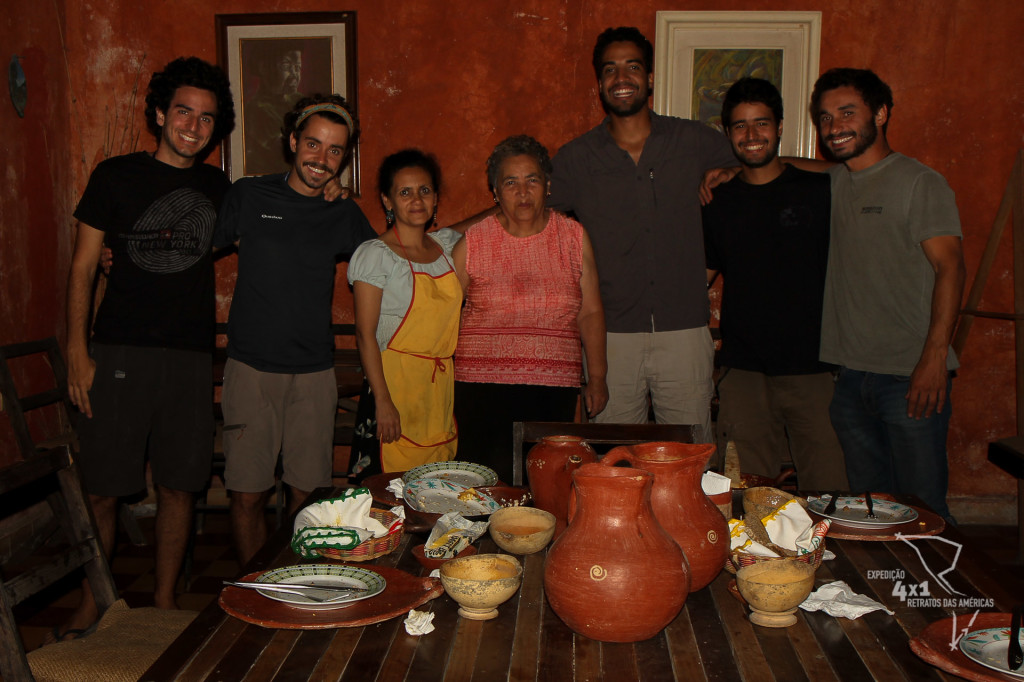
The expedition with Lizeth and Dona Martita restaurant in the center Rinconcito Graciano, em Thanks – Honduras
Owner of restaurant, Lizeth Perdomo studied marketing and worked many years in La Ceiba (one of the main cities of Honduras). Worked with city projects (Thanksgiving and região) development and culture on the table in a project involving projects related to health, education and art. Interested in developing their community, Lizeth studied the background, for many years, Lenca culture and also acts as a local guide, being the only woman, among 14 that exist in the city. Participates as a volunteer in social welfare activities and cooperate in activities of the Catholic Church City. His latest dream (which already has architectural design ready and awaits only the output of external financial resources) is to transform your home into a restaurant and hosting sustainable.
With a speech always in favor of local business development, Lizeth is an example of community citizen. As his work in the parish had finished late, decided to leave our meal with her for breakfast (after all she is very thorough and prepares everything to order using including pots, cutlery, bowls and utensils made by the communities themselves Lenca). Leaving there hungry we went to a local pizzeria that, despite being closed, primes and William Carlos, as soon discovered that we were Brazilians, made sure to reopen it and prepare some pizza. Very friendly and jokers, sat at the table with us and after much ask us about Brazil, put videos with songs and dances of Honduras, the Tip - Has 'descent' Garifuna - And the conversation rolled loose until late! Carlos was returning from the U.S. after a failed attempt to improve life. Happy with the new business, he was still shocked to have left behind his daughter and wife, although Salvadoreña, U.S. had crecido. Chat chat will come, we did not realize that already passed the 23h! We ran back to Finca Bavaria (a small property that had once been a small coffee plantation) and more than lordy 70 years old, tomava account that the Finca, was asleep and left us locked outside!!! We entered into despair because there was Tanajura!!! The solution?! City, Our only alternative was to jump over the wall! Off we went again remember the college days! There were 5 grown men doing "little foot" jump over the wall to the other…hahahaha
The next morning, as combined, returned for breakfast prepared by Lizeth. Also agreed to spend the day with her to know more about the locals and the Lenca culture. And we went… first stop: the site of sr. Maximino Rivera!
About the Sun. Maximino is senhorezinhos those you love to meet one day in life and be able to spend the day with him in the field, walking on their property and listening to their stories… And that's exactly what we did. Very humble and unable to read or write, sr. Maximino always cultivated their own lands and created its over 5 children.
Very humble, Mr. Maximino not know exactly where is Brazil. Or even if we have become a republic independent. You have no idea of the dimensions of our country neither knew that Brazil was the country where they were located the colossal "river that hardly see the other side"… "In the great forest" (Amazon), he once saw a documentary and that both impressed. But he knew that Brazil is, once – he said – heard on the radio that is one of the most important countries in the production of coffee and world reference! In which, a few years ago – he continued – a crisis has raised coffee prices in the region there. But it, 'Your’ Maximino, not always cultivated coffee. The product was recently inserted into your shifting cultivation which also includes peanuts, cane, corn and, incredibly, a tilápia! That is kept in tanks supplied by a system of 5 km of pipes qem comes from a higher point of the river of the region to his small property and fruitful, at the foot of the highest mountains in Honduras! He proudly showed us their land and at the end we toasted with a syrup taken from reeds planted there by himself! But what impressed us most was his knowledge of production of methane gas through the organic remains of his plantation. With the knowledge acquired by a technical training offered to local producers (many years ago), Sr. Maximino do your own cooking gas in a sort of greenhouse, and the excess organic matter is compost for its own planting (composting). Incredible!!!
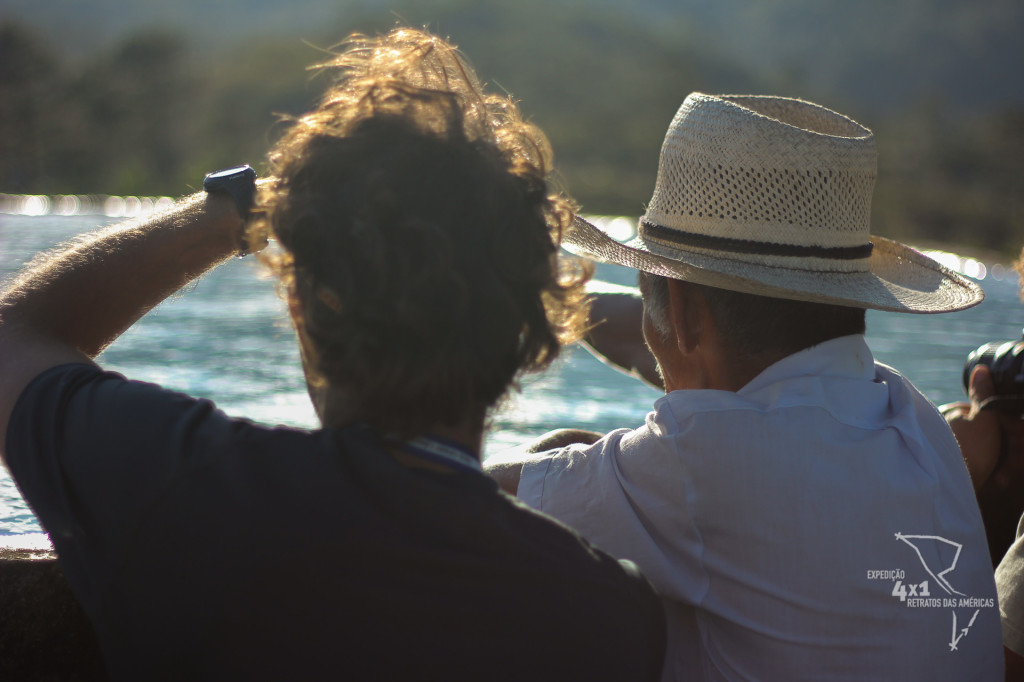
Sr. Maximino proud to show us where will their lands are located at the foot of the highest mountains Honduran.
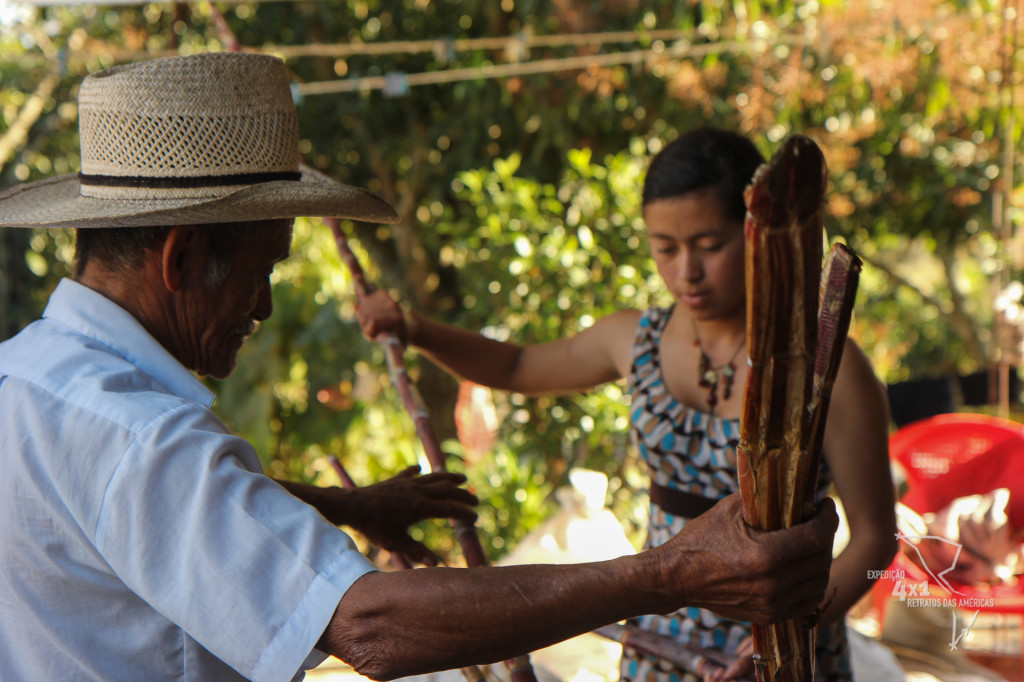
Sr. Maximino preparing us a delicious sugar cane juice (ou garapa) directly harvested on their land.
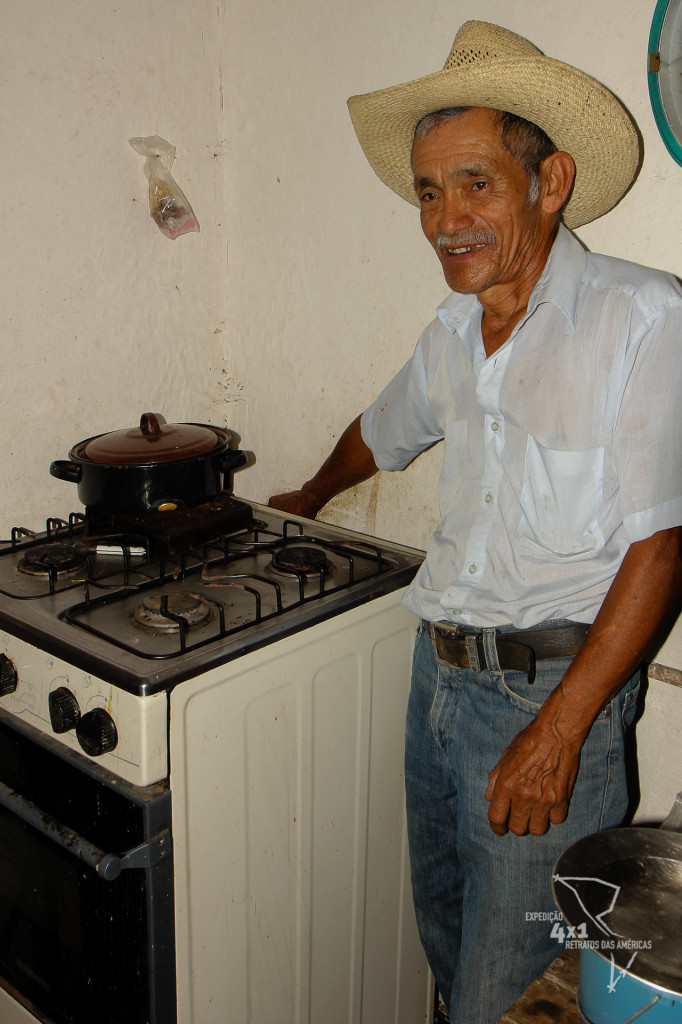
Sr. Maximino proud displays the stove being “powered” by the gas created in your own greenhouse, by the decomposition of organic material!
We talked and he asked us quite… talked about the lands of Brazil, its climate and topography. About the current economy and how many children a family has an average Brazilian today (given the difficulties of raising and educating a child currently). And he delighted in knowing how extensive was the continent (in amount of contiguous land) to be possible to drive many miles without crossing no bed! (And it's true! If you think about, really impresses the possibility the Americas allows us to virtually go from one pole to another, without, theoretically, the need for large navigations!) And as all Central American, he loved to see a note of Real and soon realized the conversion 1 Real to 10 Lempiras.
At the end of our visit, sr. Maximino was thrilled and thanked us for that afternoon that, he said, filled him with joy and learning. But who really was we learned that we had a lesson in agriculture and concepts of recovery and development of natural resources: ali, on-site, from the humility of a simple man who created and employed a large family and now has grandchildren studying engineering at university in Honduras, and are very proud grandfather!
Later that day we went to visit the offices of Atelier home called 'With him art las manos', by Dona Desideria. Ali witnessed a typical workshop descendants of Lenca culture and careful and precise work of their children and grandchildren producing clay products. It's amazing how long they take to make each piece (many custom - going up to the USA and a class in college) and the low price charged for them! The son of Dona Desideria, Leonel, paid his high school studies and 2 early years of college by selling the work of the workshop. The whole family works and knows how to handle the craft.
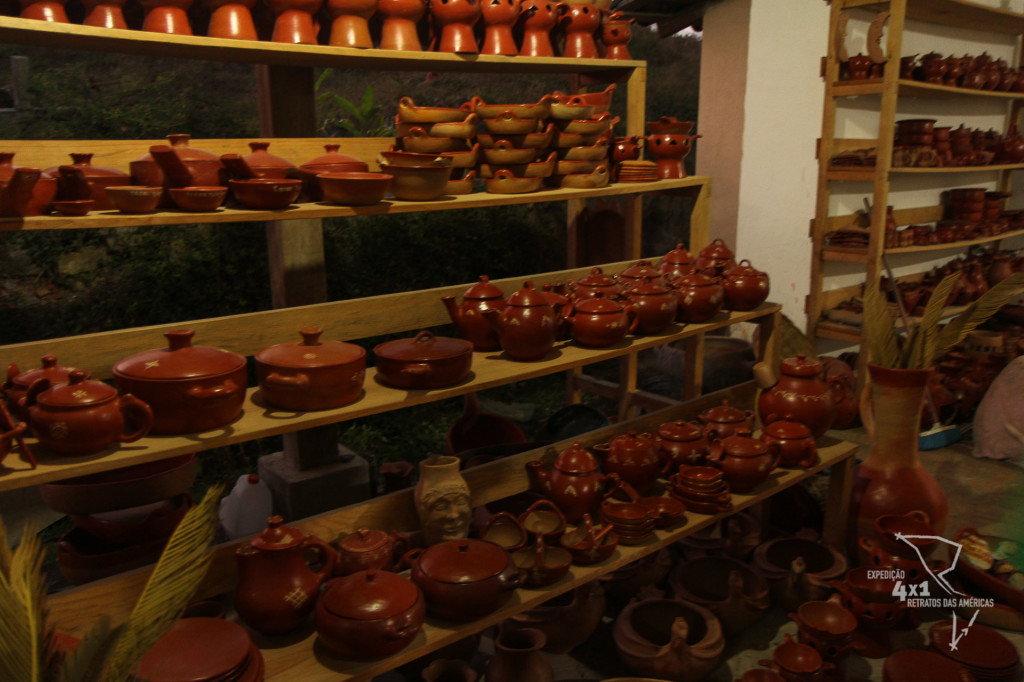
The beautiful and very well made Lenca culture dishes typically are sold at price “banana” Ateliê not 'With art on hands’ Dona Desideria and their children. (I La Campa, Thanksgiving arredores, Honduras)
We returned from the ride and we were dining at the restaurant's new Lizeth. We left early back to the Finca, but anyway lordy breached the deal and left locked outside! Again!!! But this, at least, time we were with Tanajura. And as our girl was a bit overweight to jump the fence with us, decided to go to sleep in the main square. We talked to the watchmen of the public buildings around the square who assured us that they would protect us! (that the city does not present any risk ![]() ) And there we set up "camp".
) And there we set up "camp".
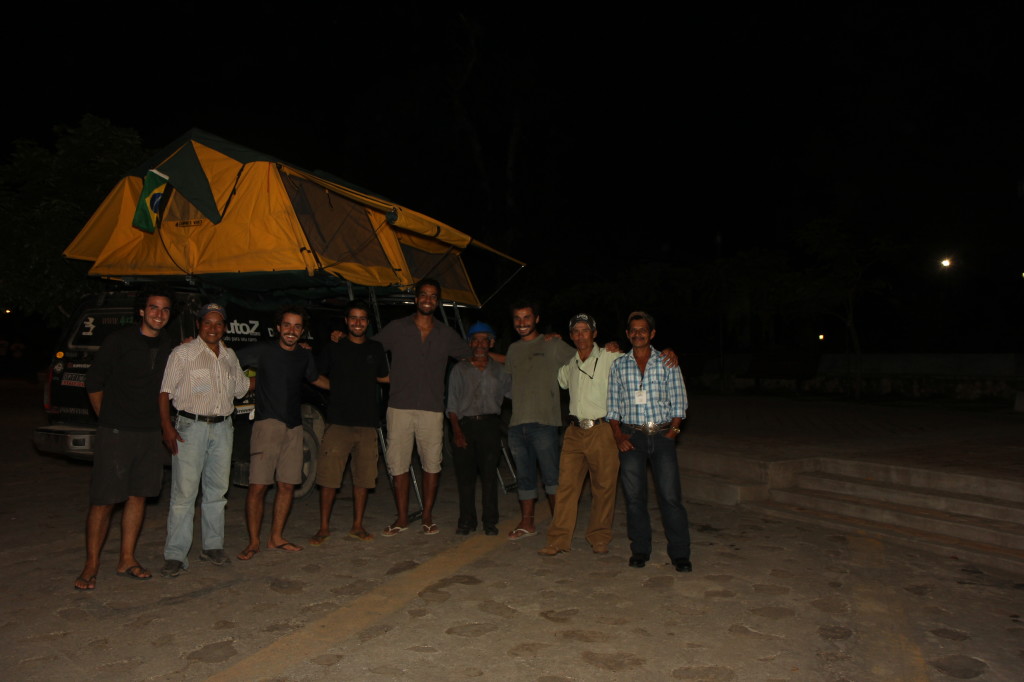
The Expedition with the friendly personal safety of public buildings Gracias, in the main square, as Tanajura “mounted” at the bottom!
And so our intense passage by Gracias. The friendliness and welcoming citizens have allowed us to know the background stories of their lives and enrich a little more of our own. Really touched our hearts.
